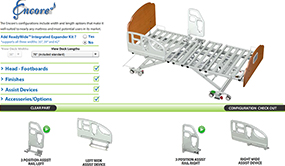|
“Pressure Elimination Seating” (i.e., ISCH-DISH) in the Literature - Abstracted
Studies
Department of Health and Human Services Centers for Medicare & Medicaid Services, CMS Manual System, Pub. 100-07 State Operations, Revision to Guidance to Surveyors for Long Term Care Facilities, Appendix PP, Tag F314, Effective Nov 12, 2004. "Positioning the patient on an existing pressure ulcer should be avoided." Arakaki B, Furumasu J. A Pilot study: factors that influence cushion selection. In: Proceedings from Thirteenth International Seating Symposium. Pittsburgh,
PA, Jan 23-25, 1997. Agency for Health care Policy and Research (AHCPR), Public Health Service/Us Department of Health and Human Services. Treatment of Pressure Ulcers. Clinical Practice Guideline #15.1994 P.41 “(Patients with impaired sensation or impaired mobility) should avoid sitting unless pressure over the pressure ulcer can be totally relieved.” Rappl L. A conservative treatment for pressure ulcers. Ostomy/Wound Management 1993;39(6):46-55. Ferguson-Pell M. Seat cushion selection J Rehabil Res Dev. 1990;(suppl 2):49-73. Zacharow D. Wheelchair Posture and Pressure Sores. Springfield, IL: Charles C Thomas; 1984. Demonstrates the construction of an inverted cut-out. Peterson M, Adkins H. Measurement and redistribution of excessive pressures during wheelchair sittings. Physther. 1982;62:990-994. Ferguson-Pell MW, et al. Pressure sore prevention for the wheelchair-bound spinal injury patient. Paraplegia. 1980;1842-51. Key AG, Manley MT. Pressure redistribution in wheelchair cushions for paraplegics: its application and evaluation. Paraplegia. 1978-1979;16:403-412. Follow-up of 166 patients over 15 months. Results: 89% success rate in prevention/treatment of sores, 49/56 patients with sores healed with no recurrence. Mooney V, et al. Comparison of pressure distribution qualities in seat cushions. Bull Prosthet Res. 1971; 10(15):129-143. |
Accessible Navigation
Section Navigation
Search Our Website
Main Navigation
- Products
- Surfaces
- Beds
- Lifts & Slings
- Seating
- Positioners
- Skin Care
- Fall Protection
- Furniture
- About Us
- Clinical/Education
- Videos
- Contact
Footer Navigation
70 Commerce Center
Greenville, SC 29615
800-888-6752
864-288-8692 fax
www.spanbackup.com
©2024 Span America. All rights reserved.
View Accesskeys
Accesskeys
This site contains a number of keyboard shortcuts, called "accesskeys," to assist in navigating. Each Internet browser has a different method of accessing these keys:
- Internet Explorer on a PC use ALT+Accesskey
- Firefox on PC use ALT+SHIFT+Accesskey
- Firefox and Safari on Apple or Linux use CTRL+Accesskey
Please note: Internet Explorer users may also need to hit the “enter” key to activate a link. Apple users with Spaces enabled may need to use the accesskey for Skip to the main navigation (A); then, TAB through the navigation and press "enter" to activate a link.
Page navigation
- 0 : Back to Home
- 1 : Products
- 2 : About Us
- 3 : Clinical/Education
- 4 : Videos
- 5 : Contact
Page jumping
- ? : View Accesskeys
- A : Skip to the main navigation
- C : Skip to the content
- S : Skip to the side bar


